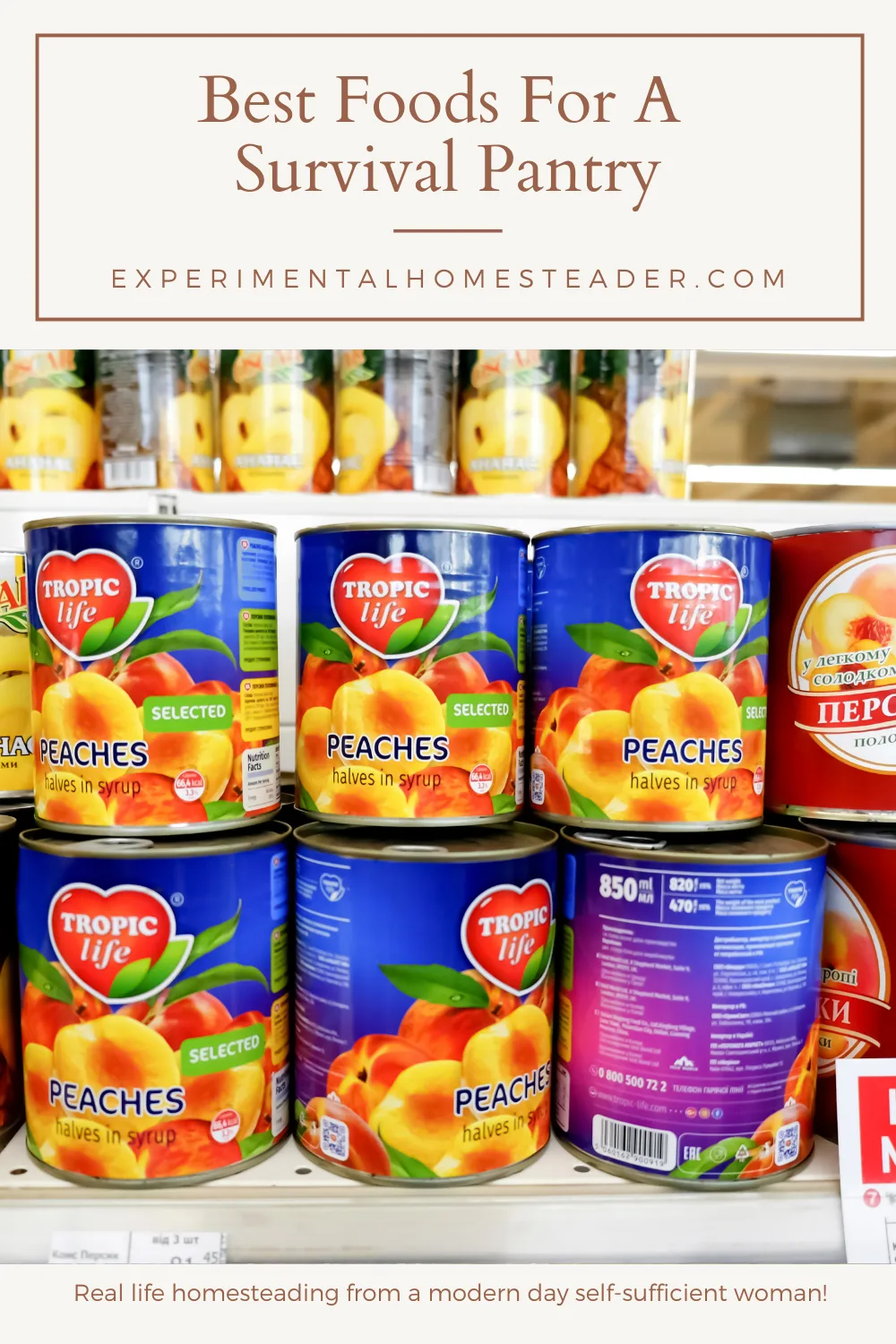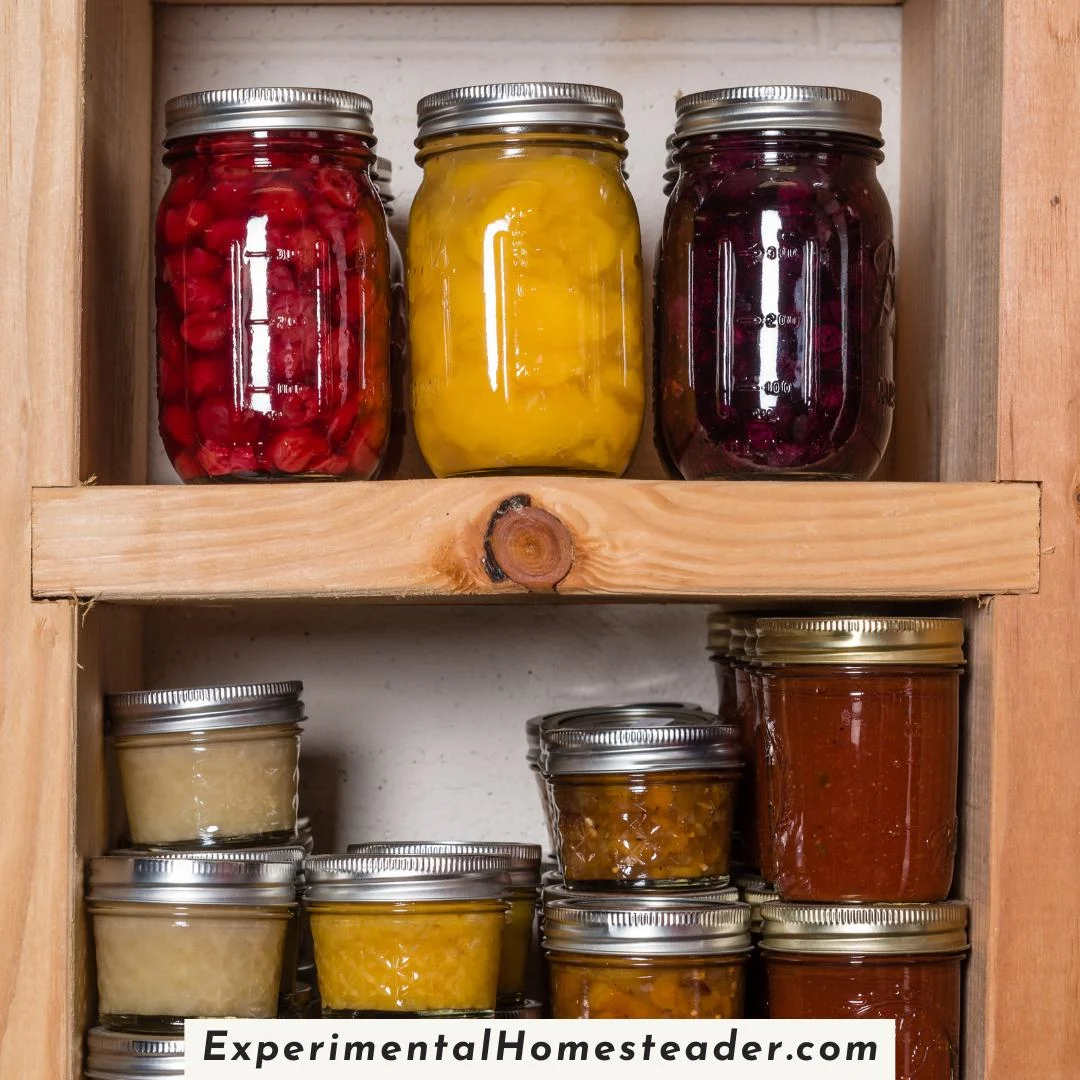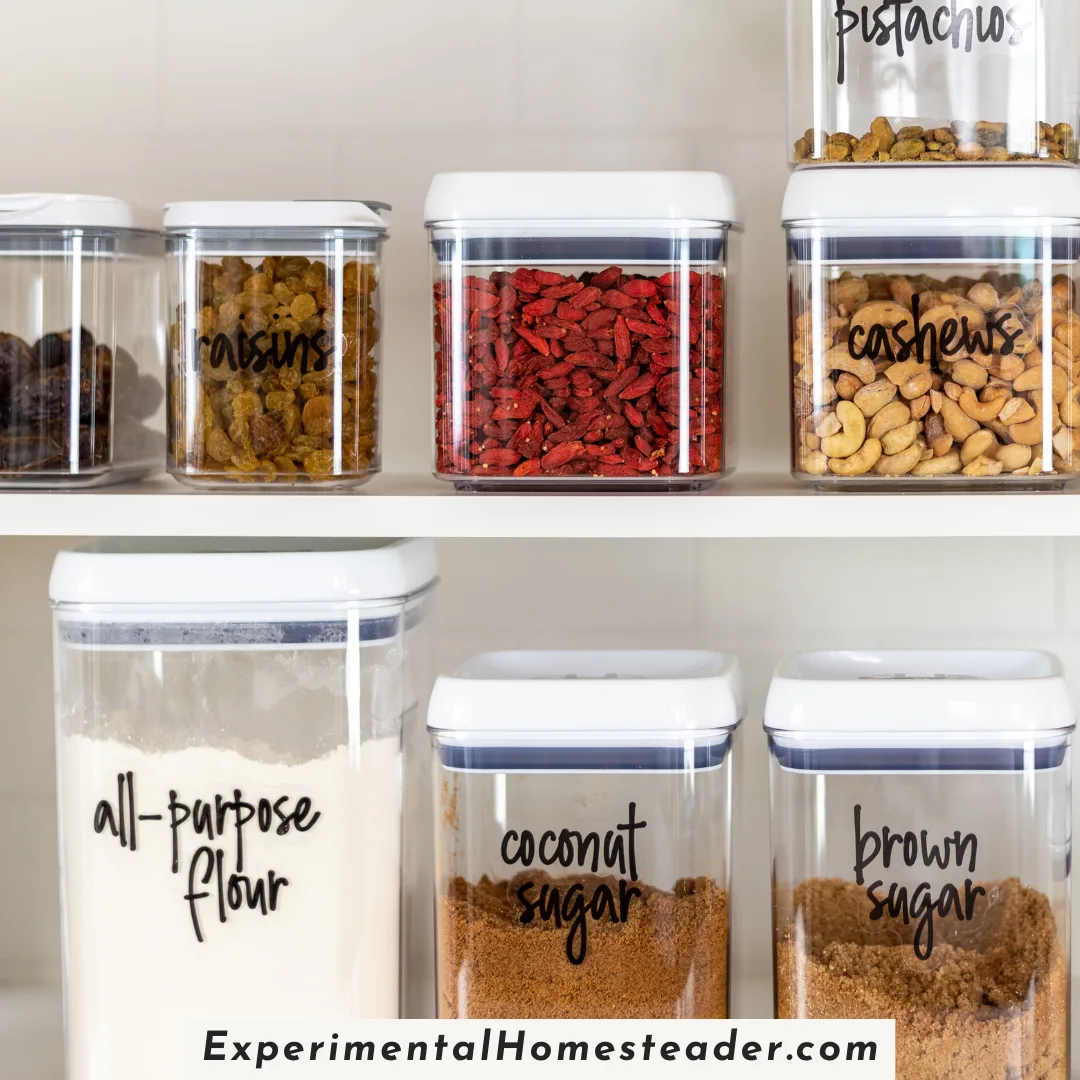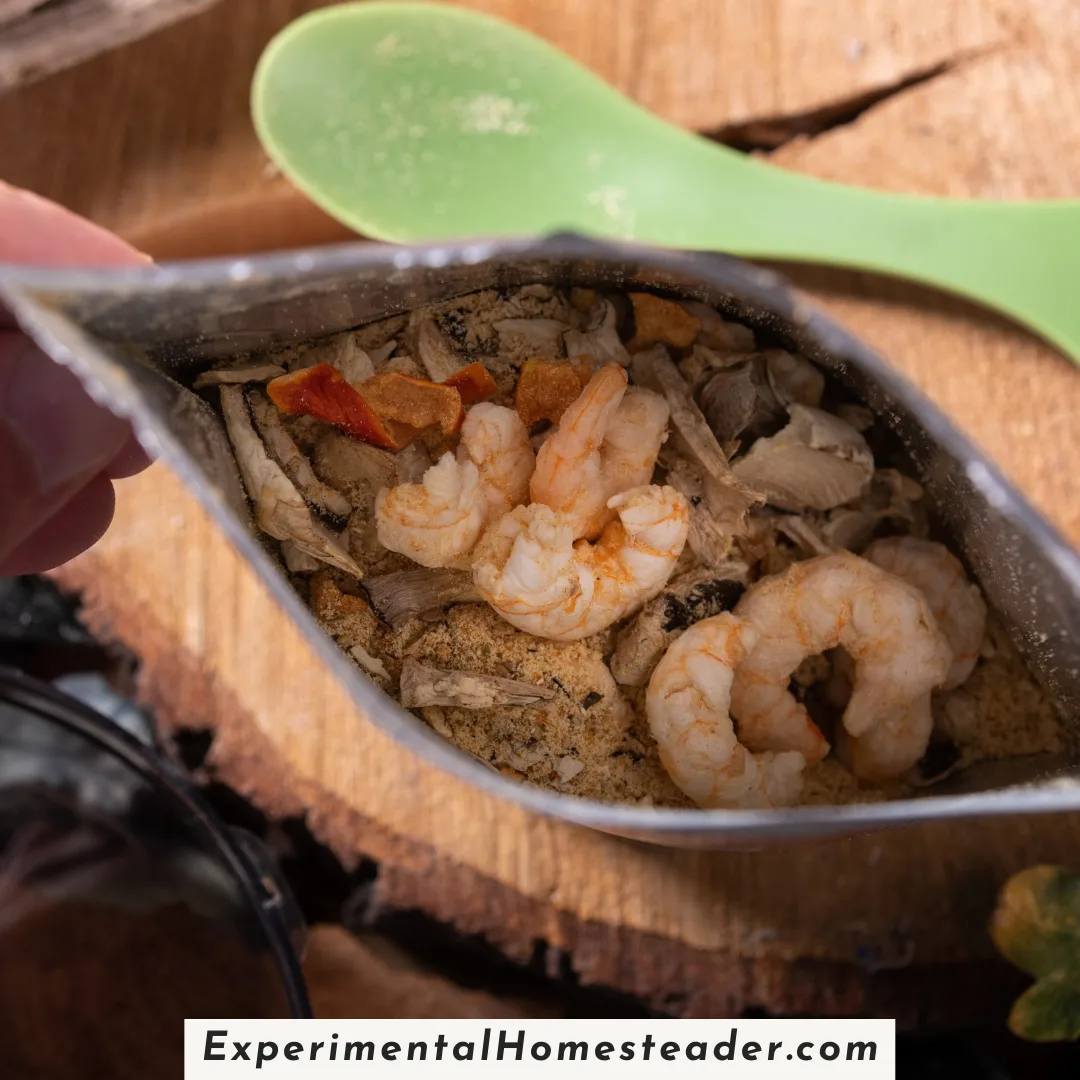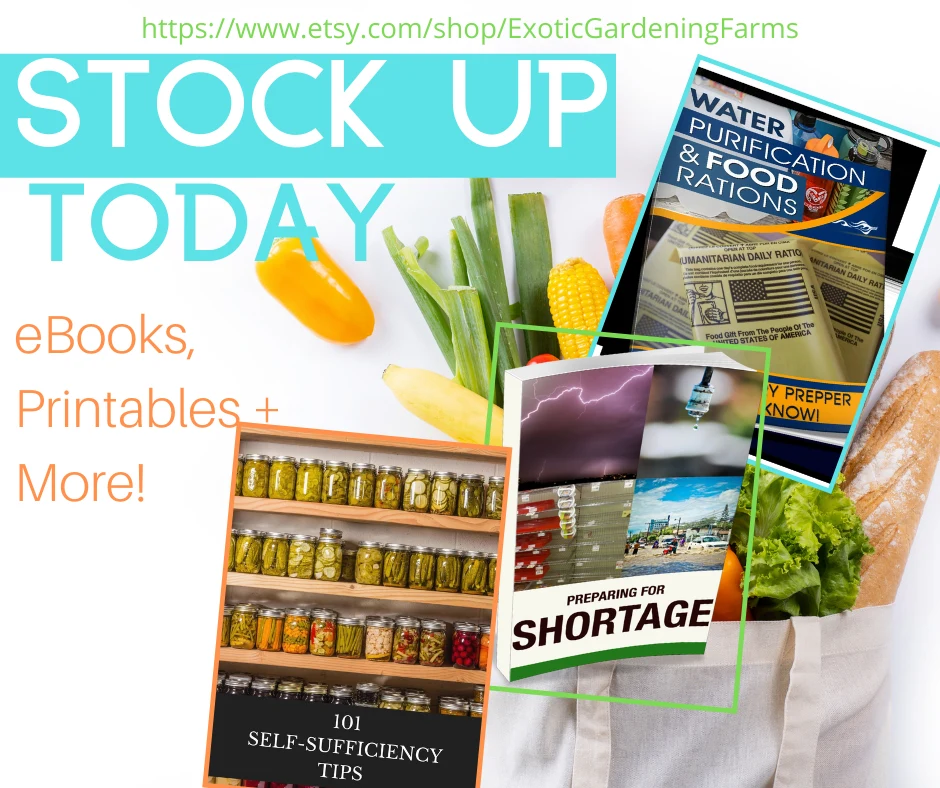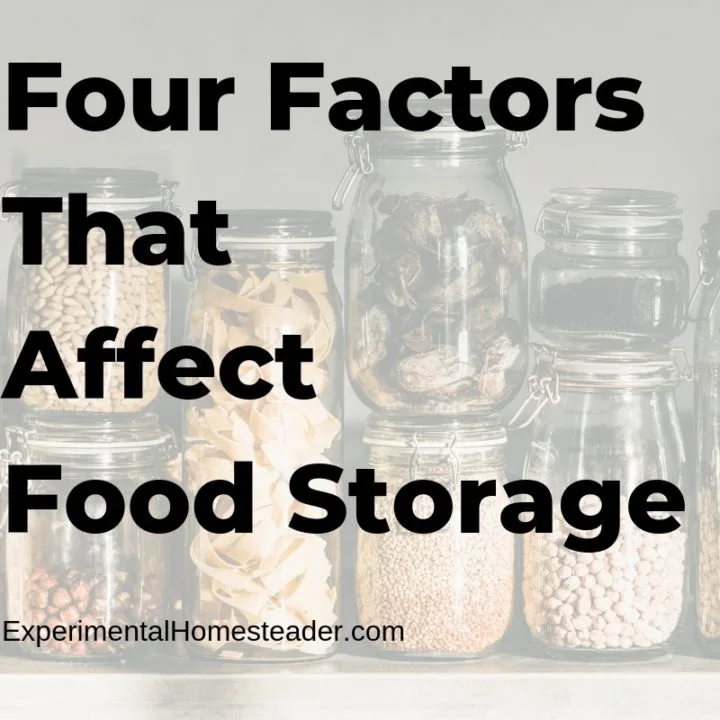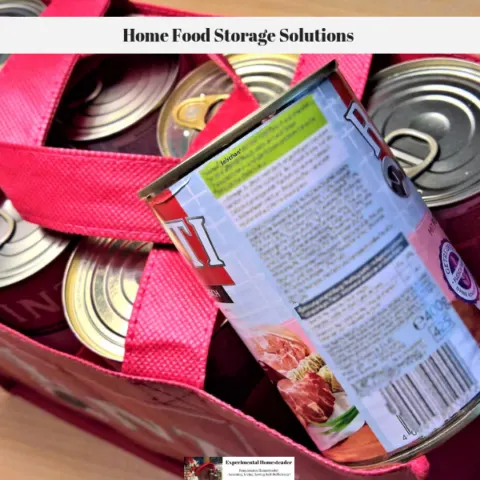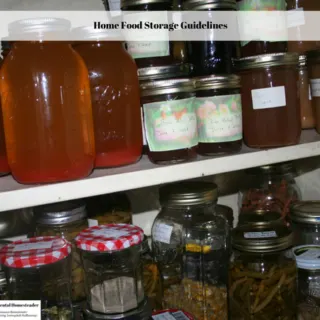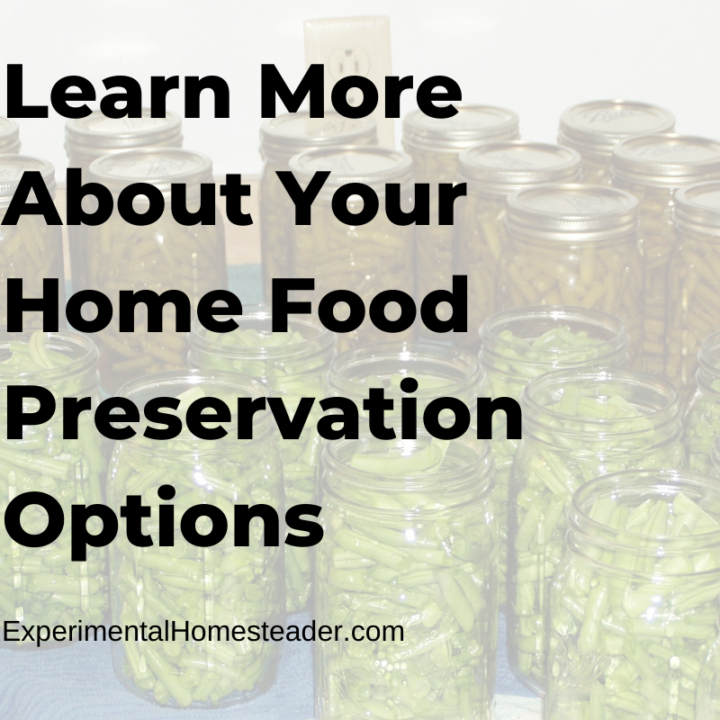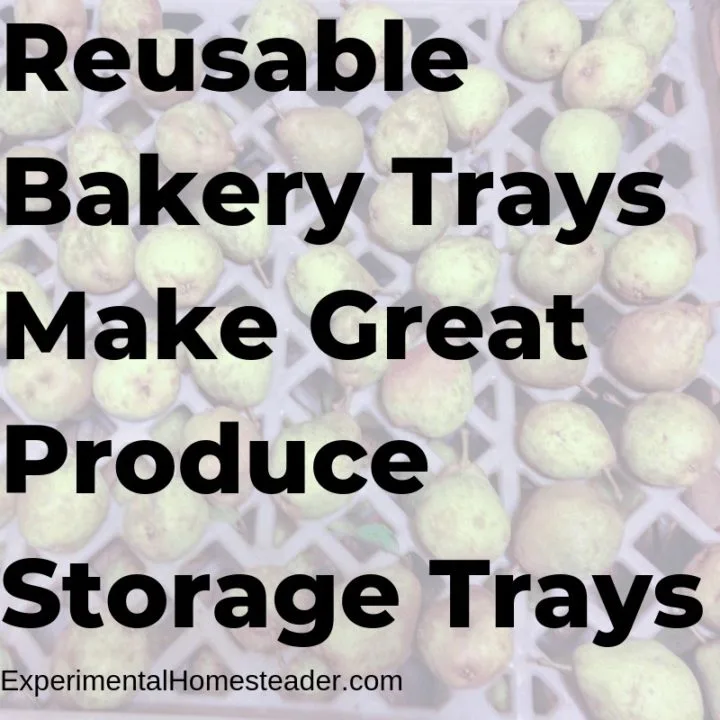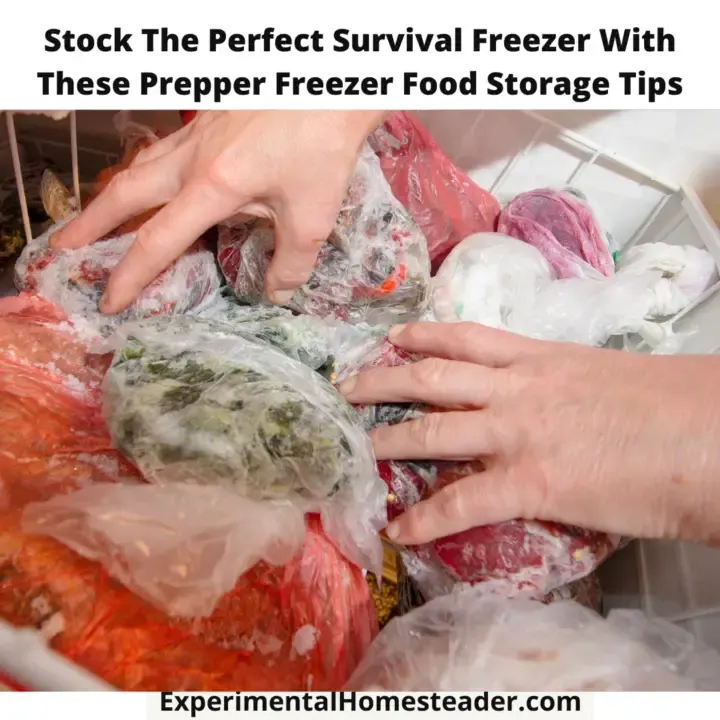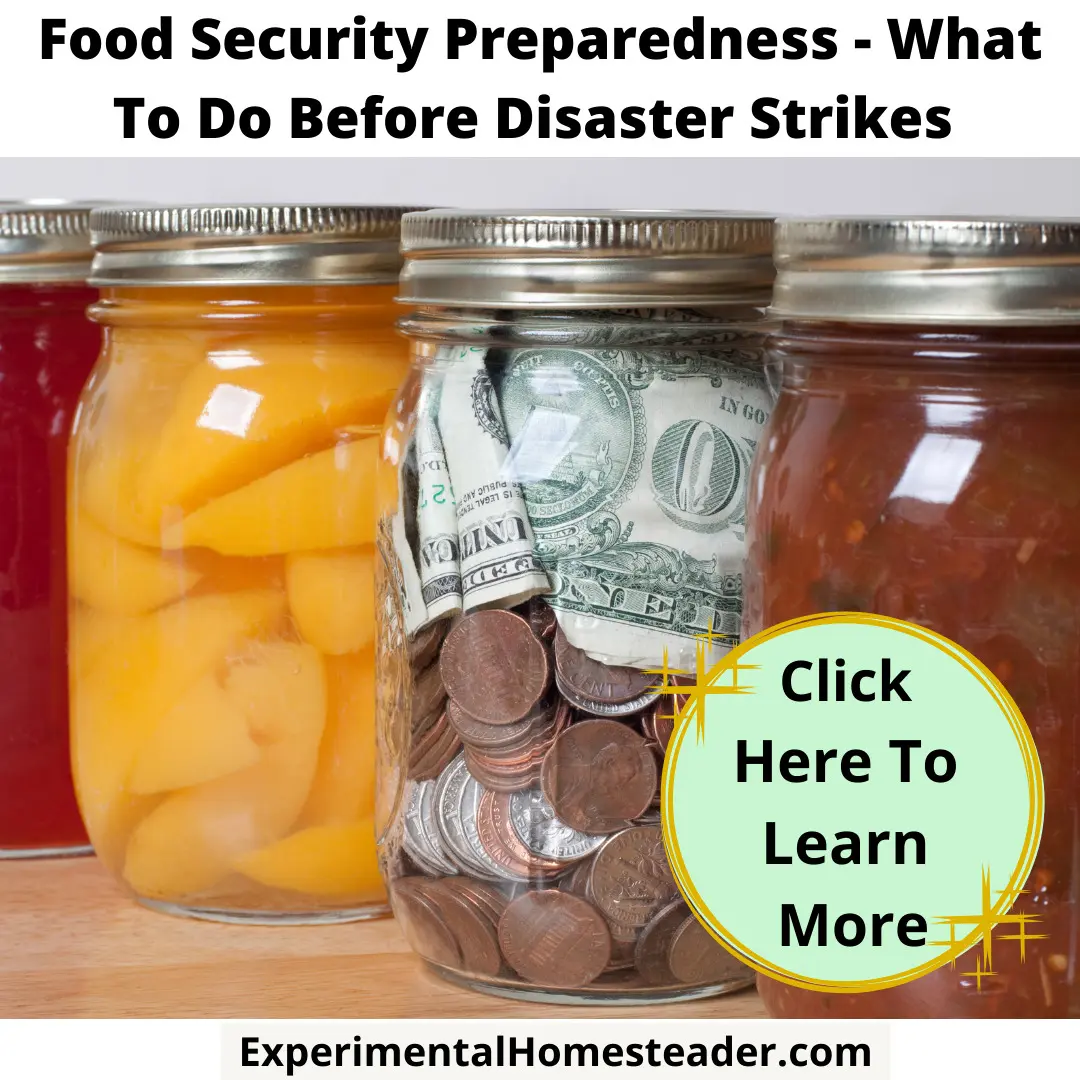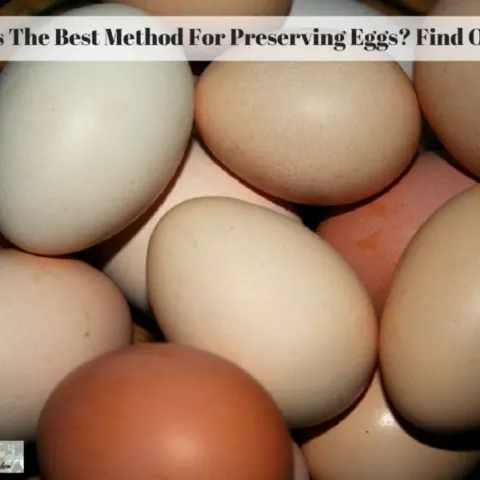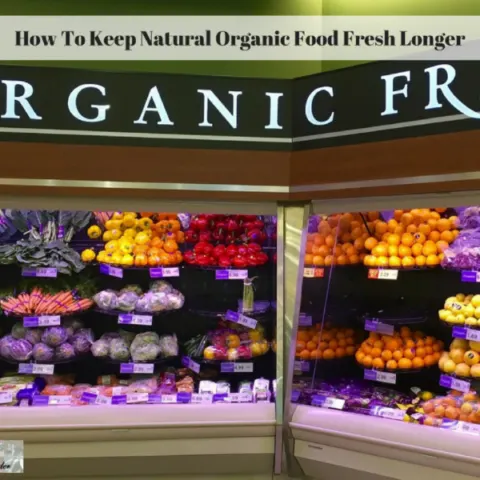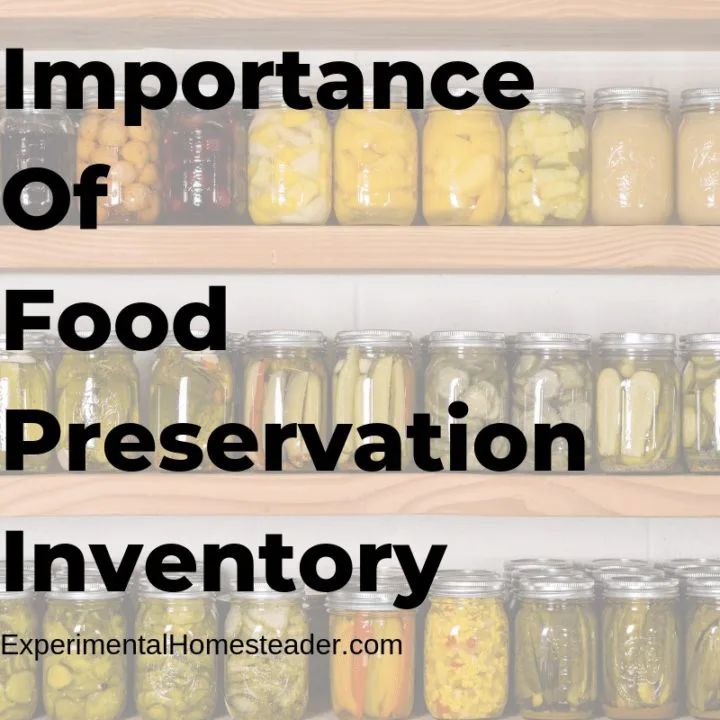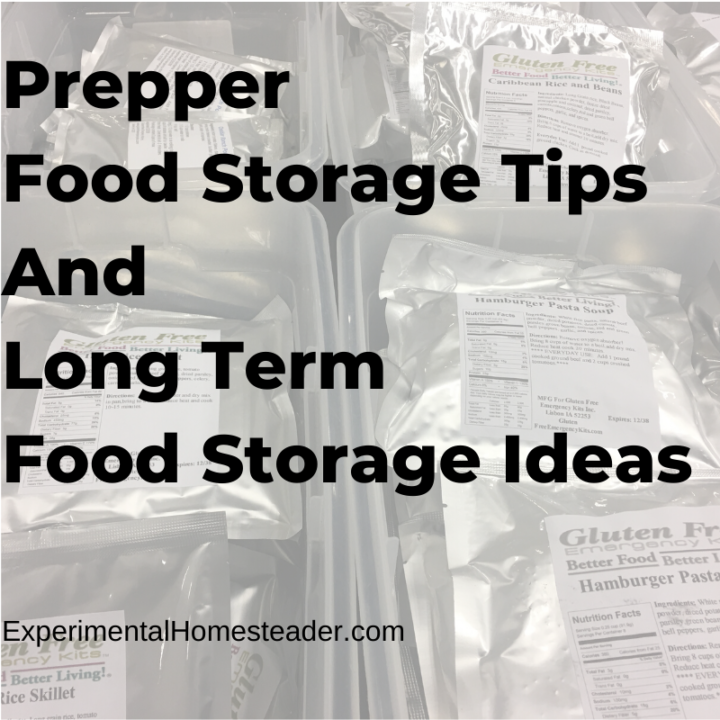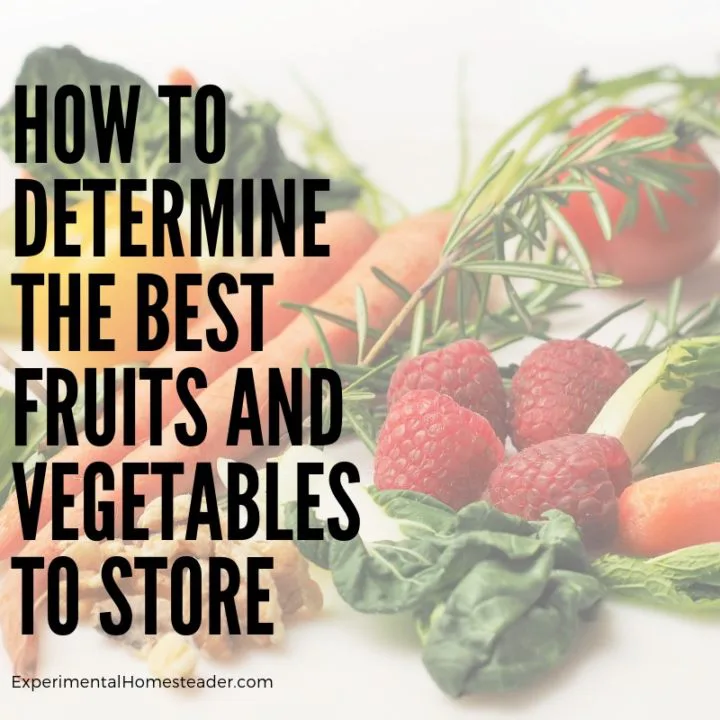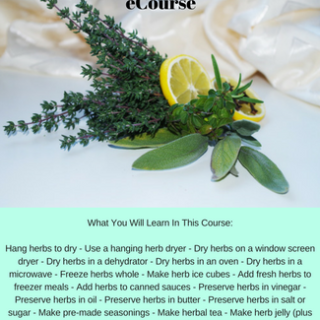The best way to prepare for the unexpected is to decide on the best foods for a survival pantry and start stocking up.
In an emergency situation like a natural disaster where there is widespread food shortages caused by storms and other factors, making sure you have enough supplies on hand is a top priority.
When you have enough food to not do without during an emergency situation, it makes it so much easier to get through tough times!
Why Emergency Preparedness Is Important
Emergency preparedness is a hot topic these days, and for good reason.
There's always the potential that something will go wrong with your food supply when disaster strikes- whether it be an act of nature or intentional sabotage from someone else in need themselves!
It doesn't matter if it's a natural weather disaster, a long term power outage or chaos descending among the population when things go south - access to food has the potential to be disrupted.
The empty store shelves over the past few years have clearly proven that.
Sometimes that disruption may only last a few days and this is what most of us are accustomized to.
If that's the case, then most people can make it through without the fear of going hungry.
But not having a way to get food for weeks on end can put you at a survival disadvantage.
That's why you want to make sure right now that you have enough survival pantry supplies to make it through a true supply chain disruption.
These aren't your typical MREs or buckets of survival food that so many people stock up on.
This is the simple stuff many people forget to stock up because they just assume it'll always be available.
That includes items like spices and herbs, condiments, canned goods, dry and freeze-fried foods, ingredients used for cooking like sugar and flour.
These are the things you need in addition to meat and vegetables and are easy enough to stock up on even if you are on a budget.
You might rarely have to buy these during good times, so you aren't focused on the fact that one day, they could be unavailable to you.
Staples Used For Meal Preparations
There are a lot of people who go all out when planning a survival pantry.
They buy the big containers of long term meals known as MREs or the pallets of variety survival food.
While that might be okay to take care of their meals, you really can't exist on these alone for your long term food needs.
Not to mention if you bulk buy these kinds of foods without ever trying them out, you might end up with a lot of food you truly do not like.
That is why it is important that you have a stockpile of staples that your family is familiar with and will eat.
One of the main food staples that you want to stockpile is peanut butter.
It's loaded with nutritional value because it contains a lot of vitamins.
It's packed with potassium and iron - plus, eating it can give you energy - the kind of energy you will need when facing a survival way of life.
You don't have to worry about peanut butter going bad fast, either.
If you store it correctly, it has a long shelf life.
Peanut butter that is kept in a dry place that's cool can last several years and still be good as a snack or as part of a meal.
You will want to be sure that you have plenty of flour stored away, too.
Though there are different types of flour, the one that tends to last the best for long term survival is white flour.
If you store it the right way, it can last for years.
Before storing it long term, it is a good idea to put it in a freezer bag and freeze it for at least a month.
This insures any potential bug eggs that could be in the flour are killed off.
Once you remove it from the freezer, it needs to be kept in a food grade bucket and you have to keep the temperature of the area where it is stored cool.
You will want to stockpile flour because you can use it to make bread and use it to make a coating for meats or other foods.
Plus, it can be used to make things like pancakes or dessert items such as cakes.
Stock up on sugar, too.
Not only do you need sugar to bake with, but sugar is also a necessity if you plan to can certain types of food items.
Buy a supply of salt because salt is necessary for your health in addition to being a staple for many when they cook.
If you stock up on salt, you will want to get the kind that is not iodized.
Salt with iodine in doesn't have a shelf life as long as salt without iodine.
For canning, stock up on canning salt.
You will need to add oil to your list of pantry essentials.
Oil is needed for baking and frying not to mention it is used in many recipes.
Baking soda and yeast are also staples you will want to make sure is in your survival pantry.
You need both for cooking - but baking soda can also serve other purposes as well, such as mouthwash.
Canned Fruits And Vegetables
It is a given that your survival pantry should include plenty of canned fruits and vegetables.
Look for the ones that are canned in water.
The reason for this is because you can use that water for hydration, so don't dump it out when you open the can.
There are a few rules that do have to be followed if you're going to keep these types of foods for long term storage.
You must rotate the foods.
While canned foods do have a long shelf life, they don't last forever, so use up the ones that are closer to their expiration date and replace them with a fresher version that has a later date.
That is why you need to store the foods that have the earliest expiration date at the front.
That way, you will grab those first when cooking.
To store them, you have to keep them away from heat and humidity.
Both of these will destroy the food.
Canned foods need to be stored in comfortable temperatures.
When it gets too hot, the food can spoil.
While some foods will give off an odor when spoiled, you might not notice an odor in others.
Remember that even store bought canned food and spoil and that spoilage can make you sick.
The inconsistent temperatures in garages are why having your survival pantry supplies stashed there aren't a good idea.
Wherever you store the cans, the temperature needs to remain consistent.
It is not good for long term storage use to let canned foods be in an environment above 70 degrees.
Never use a damaged can.
You run the risk of exposure to botulism.
While it is rare, it is still a possibility and it is better not to take the chance.
Vegetables that keep well in a survival pantry include carrots and green beans.
You can also store potatoes and winter squash long term, especially if you have a root cellar.
Canned corn keeps well and so do green peas, black-eyed peas, navy beans and baked beans.
Diced or stewed tomatoes can be stored well and so can tomato sauces as long as the temperature is regulated.
It is important to stock up on citrus fruit in a can because you need those vitamins and nutrients.
Stock up on cans of peaches and pears.
Get cans of cherries, mandarin oranges and fruit cocktail or better yet, can your own fruit cocktail.
You can get cherries, pineapples and mixed fruit.
Canned mango and apricots are a good addition as well.
If you have trouble finding canned fruit to stock up on, in a pinch, you can stock up on fruit pie filling.
Even though most of them are loaded with sugar, the fruit in the filling is still good for you.
What you want to keep in mind is that in the event of a long term food supply shortage, you'll need a lot of variety.
Not only will eating the same foods day in and day out lead to boredom, but you could miss out on the right supply of vitamins and minerals that you need.
Dry Foods That You Can Cook
The next item your pantry needs to be a variety of dry foods that you can cook.
Dry foods have a long shelf life.
Plus, many of them are high in complex carbohydrates, which takes the body longer to digest so it gives you longer lasting energy.
Pasta is one dry food that you want to have plenty of.
This food is categorized by shape, thickness, and grain type.
You should set aside a stockpile of spaghetti noodles.
You can make regular or baked spaghetti, but in a pinch you can also use these noodles to make fettuccine, if you get the thicker noodles.
Have a good supply of various types of noodles.
Spaghetti falls into the pasta category but sometimes pasta is used interchangeably with noodles.
So you'll see them listed as angel hair or capellini.
Macaroni and rotini are noodles you will want to have on hand.
Also have tortellini and ravioli noodles.
You can make a lot of dishes with both these types of dry foods.
Another option is to learn how to make, dry and store pasta yourself.
It is made of flour, eggs, water and salt.
Beans are a dry staple and these can be used in a lot of main dishes as well as in a single dish.
They can go in casseroles, soups and salads and offer a lot of protein as well as fiber.
In addition, beans are not only easy to store, but they weigh less.
You can stack them or put them in sealed containers.
When kept properly, because they are known as non-perishables, beans have a shelf life of two to three decades.
But if you plan to keep them that long without rotating them out of your stock, then you will need to put them in bags other than the ones they come in originally from the store.
You can use Mylar bags, but you will also want to include an oxygen absorber.
This ensures that the quality remains good.
Rice is another staple that belongs in a survival pantry.
If you are not sure how much rice to set aside, as a rule of thumb, figure on every member of your family having a cup a day.
This staple is also something that can keep for two to three decades when stored the right way.
Fresh supplies may be limited in a survival situation.
That is why your dry staples should include things like powdered milk and butter.
This can be used as a substitute for fresh items in food prepping.
The milk can also be used for drinking, on cereal and more.
The nutritional value of this food matches that of fresh milk although it may not taste the same.
Another option is freeze dried milk.
Powdered eggs can last for about a decade.
You can get these in canned containers or bagged containers and the amount of eggs they will yield when prepared can vary.
Some will offer around 70 eggs, while others yield over 100 from the supply.
Potato flakes should be in the pantry, too.
You can make mashed potatoes, use them as a meat coating or soup or gravy thickener.
Storing them in Mylar bags can extend shelf life for about two decades.
Oats should be part of a survival pantry.
This food is inexpensive, has a long shelf life and can be added to other dishes.
They can also be made into a quick meal.
Freeze Dried And Dehydrated Foods
When preparing your pantry, you don't want to overlook the importance of freeze dried and dehydrated foods.
Food that is freeze dried is easy to take anywhere.
You can use it at home, pack it if you need to bug out and it lasts for decades without spoiling.
Some people worry that freeze dried foods mean you're giving up the nutrients to save the food this way, but that is not the case.
Even more so than canning, freeze dried food will retain all of its nutritional value.
You may notice when you use it that it looks and tastes just like the foods were prepared when they were in their fresh state.
The majority of foods can easily be freeze dried.
You can even store your pet food this way if you need to.
There are only a few foods that aren't really suitable for this method.
You can even use the freeze dried method to keep meat as long as you cook it first.
Though some nutritional value is lost during the cooking process, it is minimal.
When hydrate the foods that you store this way, you'll get almost all of the nutrients you would have gotten when you first cooked it.
Freeze dried food makes good as survival foods because they can be eaten in the freeze dried state if necessary.
You will also want to look into stocking up on dehydrated foods or dehydrate food yourself.
There is a difference in how the two are prepared.
When you freeze dry something, it means, you're taking the majority of the moisture out.
But with dehydrating, the process leaves a little more water in the food item.
This is one reason that freeze dried foods will last longer.
However, these types of foods are extremely lightweight and can be stored for a long time.
There are different ways that you can prepare food using the freeze dried method.
One simple method is done by using your home freezer, storage bags and a baker's rack.
Another method involves using dry ice.
But you can also buy a Harvest Right Freeze Dryer, which is my recommendation.
However, these aren't cheap and can cost anywhere from a few thousand dollars on up.
If you decide to dehydrate the food that you want to store, you can do this at home by using your oven or a microwave.
The setting that you would use will depend on the food that you are trying to dehydrate.
You can also air dry non-spoilable foods.
Though you can do it yourself, some people invest in a multi-use dehydrator because they are not that expensive and it makes the job faster and easier.
Don't Forget The Little Things
It is the little things that can make a big difference in so many areas of your life.
When it comes to getting your survival pantry ready, these are the things that you don't want to forget to stock up on
As you prepare your meals, if you normally use spices to give them flavor and a delicious scent, you won't want to stop using them.
Without spices, food can taste bland and unappealing.
Not only that, but spices are also beneficial to your overall health, too.
For example, one of the things they do is to help fight inflammation.
It is best to stock up on things like bay leaves and oregano which is easy to grow yourself, as well as Italian spices.
You will also want to have on thyme and onion powder or garlic powder on hand.
Chili powder and cumin are a necessity as is turmeric, dill and ginger.
You don't want to forget cinnamon and pumpkin spice, either.
Keep plenty of salt and pepper on hand.
You can get different varieties of salt and pepper.
Don't forget yeast - and if you do forget or run out, don't panic because you can make your own yeast with items you likely already have on hand.
Coffee is a given if you're a coffee lover.
You are going to want to make sure you have plenty of this beverage to get you through whatever survival situation is going on.
Not only is this a great beverage for helping you to perk up in the mornings, but coffee has health benefits, too.
You don't want to neglect storing your little pleasures like coffee, even it is cold brew coffee, because in a bad situation, it can help you to feel better.
Condiments are something that you don't want to overlook.
Most people automatically store condiments like mustard and mayonnaise along with ketchup.
But there is a lot of variety to be found in condiments and they can do more than just add flavoring or spice up a food.
For example, ketchup can be added wherever you need the taste of tomatoes by may not have any.
Keep a supply stored of things like barbecue sauce and salad dressings.
Both can be used as dips, on salads and as a marinade for cooking meat.
One way to easily stock up on these items is to save the extra packets you get when you order out.
Place them in a large glass jar, such as a canning jar and keep them in your pantry.
Stockpile steak sauce or learn how to make your own steak sauce and make sure that you get varieties that offer various flavors and seasonings.
This can help prevent food boredom.
Steak sauce can also be used as a marinade - even on meats like chicken - as can salad dressings.
Keep a supply of salsa and tobacco sauce to give foods a little kick or extra spiciness.
Salsa can be added to soups or casseroles that call for tomatoes or diced tomatoes.
Don't forget to add soy sauce to your pantry, too.
Hard candy is something that many people don't think of when planning a survival pantry.
Hard candy can give a burst of energy when it is needed because it does contain some carbs.
Store items like lollipops, butterscotch candies, cinnamon candies, peppermints, and assorted fruit flavored candy.
They will keep for a long time, are lightweight and easy to take on the go, and will keep everyone in your family a little happier with the quick burst of sweetness.
Whenever you start planning your survival supplies, you'll instantly consider water and main food products, like canned meat, rice and vegetables.
Just remember that while it is very possible to survive on a bland bowl of unsalted rice or beans, you are already going to be stressed enough as it is.
Having pantry staples that help you recreate family favorites, offering comfort during chaotic times, will be very important.
You want to be able to supplement your normal food stores with that extra bit of flavor that satisfies your family and keeps them strong in the face of a major life change.
Make a note of what you currently use in recipes whether it is as simple as Season Salt or a myriad of extracts that flavor your loved ones favorite desserts.
Have some extra on hand for those times when you need a boost of motivation or an added ingredient that helps you nutritionally.
Food Storage Ideas
Building Root Cellars That Work
From in ground root cellars to ones in closets, under stairwells or even in a basement, there are many options for building root cellars that work.
The Best Way to Store Potatoes: Maximize Your Fresh Ingredients
Discover the best way to store potatoes with the right selection, optimal storage conditions and routine checks & maintenance.
Four Factors That Affect Food Storage
Understanding the four factors that affect food storage is essential for keeping your food safe, especially if you intend to store it long term.
Home Food Storage Solutions
Learn about home food storage solutions that are psossible even if you have limited space as well as how to stock up on food is essential for everyone.
Home Food Storage Guidelines
Long term food storage is a great way to be prepared for an emergency. Check out these home food storage guidelines and be sure to print the handy chart!
Learn More About Your Home Food Preservation Options
Learn more about your home food preservation options incluing canning, freezing, dehydrating and a few others that are a little less known.
10 Home Food Storage Solutions That Will Inspire You
These 10 home food storage ideas make family food storage possible even in small apartments. Now you can stock up on essentials and hide them in plain site.
Reusable Bakery Trays Make Great Produce Storage Trays
Bakery trays make great reusuable produce storage trays for root cellars or even for storing fruits or vegetables during the food preservation process.
Long Term Survival Food Supply Options
When it comes to long term survival food options, there are numerous reputable companies out there but you need to choose food you like.
Stock The Perfect Survival Freezer With These Prepper Freezer Food Storage Tips
Learn how to stock the perfect survival freezer with these prepper food storage tips. Plus learn what to do if the grid goes down.
Food Security Preparedness - What To Do Before Disaster Strikes
Learn what food security preparedness skills you need to survive any natural or man-made disaster, and why you should grow your own food.
What Is The Best Method For Preserving Eggs? Find Out Now
Are you wondering how to store eggs? Learn the various techniques you can easily use at home for preserving eggs fresh from your poultry. #preservingeggs #preservingeggsfoodstorage #chickeneggs #eggstorage #eggstorageideas
Souper Cubes: Making Freezer Meal Prep Easier Than Ever
Save time and freeze with ease - Souper Cubes is revolutionizing freezer meal prep. Learn about the amazing features of Souper Cubes now!
Freezing Goats Meat
Freezing goats meat is easy as freezing other type of meat. If you raise goats or have access to goat meat this is an easy way to stock up.
How To Make Freeze Dried Sweet Corn At Home
Learn how to make freeze dried sweet corn at home. Freeze dried corn stored in mylar bags with oxygen absorbers lasts 25 years or more! #freezedriedsweetcorn #freezedriedfood #freezedriedrecipes #freezedriedcorn #freezedriedcornrecipes
Learn What A Survival Pantry Is And Why You Need One
Create a survival pantry so you can avoid panic buying and feel secure knowing your family has the essentials no matter what emergency situation occurs.
Try These Off Season Food Preservation Ideas
These off season food preservation ideas are perfect for the off season. There are lots of items you can fill your freezer with or even can year-round. #foodpreservationideas #foodpreservation #foodpreservationmethods #foodpreservationfreezing #foodpreservationhomesteads
How To Start Freezing Goat Milk
Freezing goat milk is the best way to preserve it. Learn how long frozen goat milk lasts in the freezer, how long it lasts in the refrigerator and more! #freezinggoatmilk #goatmilk #freezegoatmilk #freezemilk #freezemilkhowto #freezemilkcanyou #freezemilkstorage
Importance Of Food Preservation Inventory
Do you understand the importance of food preservation inventory? From spices to food stored in the freezer and pantry, this list can help you save money. #importantofdoorpreservationinventory #foodpreservation #foodpreservationhomesteads #foodpreservationjournal
How To Store Noodles
Learn how to store noodles including fresh homemade noodles and store bought noodles. Also learn how to store noodles long term. #howtostorehomemadenoodles #howtostorecookednoodles #howtostorehomemadeeggnoodles #howtostorecookedspaghettinoodles
Prepper Food Storage Tips And Long Term Food Storage Ideas
These prepper food storage tips are sure to help you come up with some long term food storage ideas to help you survive during an unexpected situation.
How To Make Delicious Batch Cooking Freezer Recipes
Learn how to make delicious batch cooking freezer recipes. Buying in bulk saves money. Preparing the meals ahead of time saves time. #batchcookingfreezerrecipes #batchcookingmealprep #batchcookingfreezer #freezerrecipes #freezerrecipesmakeahead
How To Determine The Best Fruits And Vegetables To Store
Learn how to determine the best fruits and vegetables to store for winter use plus get tips on how to store them for the best results. #bestfruitsandvegetablestostore #foodpreservation #fruitsstorageideas #fruitsstorage #vegetablestorage #vegetablestorageideas
Preserving Herbs For Winter Use eCourse
🌿 Unlock the Magic of Herb Preservation: Your Winter Flavor Journey Awaits! 🌿
Are you a devoted herb enthusiast, yearning to savor the taste of fresh herbs even during the chilly winter months?
Do you find yourself intrigued by the thought of using herbs in more creative and delightful ways beyond just seasoning your dishes?
Discover the secrets to preserving herbs like a seasoned pro in our brand-new eCourse: “Preserving Herbs For Winter Use”! 🌱✨
🌱 Imagine having your favorite herbs at your fingertips all year round. Envision creating exquisite pre-made seasonings, soothing herbal teas, and even your very own herb-infused oils. The possibilities are endless, and we’re here to guide you through every step of the journey.
🌿 What Awaits You in Our Course:
🌱 Master the art of drying herbs using diverse techniques – from hanging them to utilizing dehydrators, ovens, and even microwaves.
🌱 Harness the power of freezing herbs to retain their vitality and flavor.
🌱 Elevate your culinary creations by infusing herbs into butter, oil, and vinegar.
🌱 Explore the world of herb ice cubes and learn to incorporate herbs into freezer meals.
🌱 Craft exquisite pre-made seasonings that will add a burst of flavor to your dishes.
🌱 Dive into the realm of herbal teas and delve into the secrets of herb jellies.
🌱 Benefit from the wisdom of seasoned herb preservers and enthusiasts who have already transformed their culinary experiences.
🌿 But don’t just take our word for it. Here’s what some of our passionate students have to say:
🔥 “Your insights and ideas have been an absolute game-changer for me. I’m thrilled to have found a way to preserve my herbs without losing their essence!” – Julie
🔥 “A treasure trove of knowledge! Your presentation has revolutionized my herb preservation methods. Thank you for making this so accessible.” – Suzanne
🔥 “I thought I knew it all about herb preservation, but your course was a revelation. I’ve discovered new tricks that I can’t wait to implement!” – Opal
🔥 “As a newbie to herb growing, this course has been a goldmine of information. Sheri Ann’s expertise is truly priceless.” – Terri Paige-Schef
🌿 Join us in “Preserving Herbs For Winter Use” and embark on a journey that will forever change the way you engage with herbs. Let’s create a symphony of flavors that will enchant your taste buds, even in the depths of winter.
🌱 Enroll now and embrace the world of herb preservation like never before! Your winter dishes will thank you.
Let’s preserve the essence of herbs and keep their magic alive all year long! 🌿🌟
#HerbPreservationMastery #CulinaryMagic #WinterFlavorJourney #UnlockHerbSecrets


